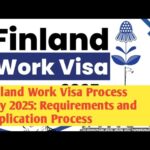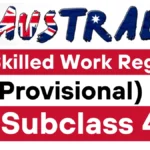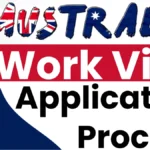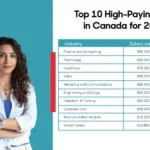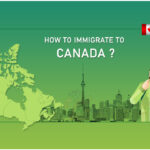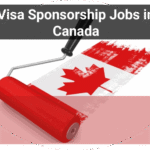Working in Australia; Requirements and Procedures – Whether you are looking for entry-level positions or professional roles, understanding the requirements and procedures for working in Australia is essential. This guide provides effective information on the steps and qualifications needed to start your career in Australia.
Why Consider Working in Australia?
Australia remains a top choice for professionals around the world, thanks to its stable economy, excellent public healthcare system, and a lifestyle that promotes a healthy work-life balance.
In 2025, the demand for skilled workers continues to grow, especially in key sectors such as healthcare, information technology, engineering, and education.
Beyond job availability, Australia is known for offering attractive salaries, diverse cultural experiences, and strong career development opportunities.
Whether you’re exploring pathways through skilled migration or planning a short-term stay with a working holiday visa, Australia provides a wide range of options to suit different career goals and lifestyles.
Salary Scale for Immigrants Working in Australia
Australia is a land of opportunity for immigrants, offering competitive salaries across various industries. However, the salary scale for immigrants can vary significantly depending on factors such as occupation, location, experience, and visa type.
In 2025, Australia continues to attract skilled workers with its robust economy and high demand for professionals in key sectors.
Average Salary Range in Australia
In 2025, the average salary in Australia ranges from AUD 60,000 to AUD 120,000 per year, depending on the industry and role.
Entry-level positions typically start at around AUD 50,000, while highly skilled professionals in fields like IT, healthcare, and engineering can earn upwards of AUD 150,000.
Key Factors Influencing Salary:
- Occupation: High-demand jobs often come with higher pay.
- Location: Salaries in major cities like Sydney and Melbourne are higher but come with a higher cost of living.
- Experience: Experienced professionals command higher salaries.
- Qualifications: Advanced degrees and certifications can boost earning potential.
1. Salary by Occupation
Salaries in Australia vary widely by occupation. Below is a breakdown of average salaries for some of the most in-demand jobs for immigrants in 2025:
a. Healthcare Sector
- Registered Nurses: $USD70,000–100,000
- General Practitioners: $USD150,000–250,000
- Dentists: $USD120,000–180,000
b. Information Technology (IT)
- Software Engineers: $USD90,000–140,000
- Data Scientists: $USD100,000–150,000
- Cybersecurity Specialists: $USD110,000–160,000
c. Engineering
- Civil Engineers: $USD80,000–120,000
- Electrical Engineers: $USD85,000–130,000
- Mechanical Engineers: $USD75,000–110,000
d. Education
- Primary School Teachers: $USD65,000–95,000
- Secondary School Teachers: $USD70,000–100,000
- University Lecturers: $USD90,000–130,000
e. Trades and Construction
- Electricians: $USD60,000–90,000
- Plumbers: $USD55,000–85,000
- Construction Managers: $USD100,000–150,000
3. Salary by Location
Salaries in Australia are influenced by location, with major cities offering higher pay but also higher living costs. Here’s a breakdown of average salaries by city in 2025:
a. Sydney
- Average Salary: $USD85,000–130,000
- High-paying industries: Finance, IT, Healthcare
b. Melbourne
- Average Salary: $USD80,000–120,000
- High-paying industries: Education, Engineering, Creative Arts
c. Brisbane
- Average Salary: $USD75,000–110,000
- High-paying industries: Construction, Mining, Healthcare
d. Perth
- Average Salary: $USD70,000–100,000
- High-paying industries: Mining, Engineering, Trades
e. Regional Areas
- Average Salary: $USD60,000–90,000
- High-paying industries: Agriculture, Healthcare, Education
4. Salary by Experience Level
Experience plays a significant role in determining salary. Here’s how salaries typically scale with experience:
a. Entry-Level (0–2 years of experience)
- Average Salary: $USD50,000–70,000
- Common Roles: Junior Developer, Graduate Nurse, Trainee Teacher
b. Mid-Level (3–7 years of experience)
- Average Salary: $USD70,000–100,000
- Common Roles: Software Engineer, Registered Nurse, Civil Engineer
c. Senior-Level (8+ years of experience)
- Average Salary: $USD100,000–150,000+
- Common Roles: IT Manager, Senior Doctor, Construction Project Manager
5. Salary Differences by Visa Type
The type of visa you hold can also impact your earning potential. Here’s how salaries differ by visa category:
a. Skilled Independent Visa (Subclass 189)
- Average Salary: $USD80,000–120,000
- These visa holders often work in high-demand occupations with competitive pay.
b. Employer-Sponsored Visas (Subclass 482 and 186)
- Average Salary: $USD70,000–110,000
- Salaries depend on the employer and industry, with some roles offering higher pay to attract skilled workers.
c. Working Holiday Visa (Subclass 417 and 462)
- Average Salary: $USD50,000–70,000
- These visa holders often work in hospitality, retail, or seasonal roles, which tend to pay less.
d. Regional Visas (Subclass 491)
- Average Salary: $USD60,000–90,000
- Salaries in regional areas are slightly lower but come with a lower cost of living.
6. How to Negotiate Your Salary
Negotiating your salary is an essential step in securing fair compensation. Here are some tips for immigrants:
a. Research Market Rates
- Use platforms like Seek, Glassdoor, and Payscale to understand the average salary for your role and location.
b. Highlight Your Skills and Experience
- Emphasize your qualifications, certifications, and relevant work experience.
c. Consider the Total Package
- Look beyond the base salary and consider benefits like superannuation, bonuses, and allowances.
d. Be Confident but Realistic
- Aim for a salary that reflects your value but is within the market range.
7. Taxation and Superannuation for Immigrants
Understanding Australia’s tax system is crucial for financial planning. Here’s what you need to know:
a. Income Tax
- Tax rates range from 19% to 45%, depending on your income bracket.
- Use the Australian Taxation Office (ATO) calculator to estimate your tax.
b. Superannuation
- Employers contribute 10.5% of your salary to a superannuation fund, which is a retirement savings scheme.
- You can access your superannuation when you retire or meet specific conditions.
Australia offers a variety of work visas tailored to different needs. Here are the main categories:
a. Skilled Independent V
Types of Work Visas in Australia 2025
isa (Subclass 189)
This is a points-tested visa for skilled workers who are not sponsored by an employer, state, or family member. It grants permanent residency Australia, making it a popular choice for those looking to settle long-term.
b. Skilled Nominated Visa (Subclass 190)
Similar to the Subclass 189, but requires nomination by an Australian state or territory. This visa is ideal for those targeting regional work Australia opportunities.
c. Employer-Sponsored Visas
- Temporary Skill Shortage Visa (Subclass 482): For skilled workers sponsored by an employer. This visa is perfect for those seeking employer-sponsored visa Australia options.
- Employer Nomination Scheme (Subclass 186): A permanent residency visa for skilled workers nominated by an employer.
d. Working Holiday Visa (Subclass 417 and 462)
Ideal for young adults (18-30 years) who want to work and travel in Australia for up to 12 months. This visa is a great way to explore jobs in Australia 2025 while experiencing the country’s unique culture.
e. Global Talent Visa (Subclass 858)
For highly skilled individuals who can contribute to Australia’s economy in targeted sectors. This visa is designed for those with exceptional abilities in areas like academia, arts, or sports.
Skilled Migration: Points-Tested Visas
Australia’s points-based system evaluates applicants based on factors like age, English proficiency, work experience, and education. In 2025, the minimum points requirement for Subclass 189 and 190 visas is 65 points, but higher scores increase your chances of being invited.
If you’re considering skilled migration Australia, it’s essential to maximize your points by improving your English test results, gaining additional work experience, or obtaining a skills assessment.
Employer-Sponsored Visas
Employer-sponsored visas are a popular pathway for skilled workers. In 2025, the Temporary Skill Shortage Visa (Subclass 482) remains a key option.
Employers must demonstrate that they cannot find a suitable Australian worker for the role. If you’re exploring employer-sponsored visa Australia options, ensure your occupation is on the Medium and Long-term Strategic Skills List (MLTSSL).
Temporary Work Visas
Temporary work visas are ideal for individuals seeking short-term employment. These include:
- Training Visa (Subclass 407): For workplace-based training.
- Temporary Work (Short Stay Specialist) Visa (Subclass 400): For short-term, highly specialized work.
If you’re looking for temporary work visa Australia options, these visas provide flexibility for short-term projects or training opportunities.
Working Holiday Visas
The Working Holiday Visa (Subclass 417) and Work and Holiday Visa (Subclass 462) are perfect for young adults who want to explore Australia while working.
In 2025, these visas allow you to work for up to 12 months, with the possibility of extending for a second or third year if you complete specified work in regional areas. This is an excellent option for those interested in working holiday visa Australia 2025
Regional Work Opportunities
Australia’s regional areas offer unique opportunities for skilled workers. The Regional Sponsored Migration Scheme (Subclass 491) provides a pathway to permanent residency for those willing to live and work in regional Australia.
If you’re open to regional work Australia, this visa offers priority processing and additional points for skilled migration.
How to Apply for a Work Visa to Australia
- Determine Your Eligibility: Check which visa suits your skills and circumstances.
- Gather Required Documents: Passport, skills assessment, English test results, etc.
- Submit an Expression of Interest (EOI): For points-tested visas.
- Receive an Invitation to Apply: If your EOI is successful.
- Lodge Your Visa Application: Pay the application fee and provide supporting documents.
- Wait for a Decision: Processing times vary by visa type.
If you’re applying for an Australia work visa ensure you follow these steps carefully to avoid delays.
Job Market Trends in Australia for 2025
The Australian job market in 2025 is driven by technology, healthcare, and renewable energy sectors. Key trends include:
- Increased demand for IT professionals (e.g., software developers, cybersecurity experts)
- Growth in healthcare and aged care roles
- Opportunities in engineering and construction for infrastructure projects
If you’re targeting jobs in Australia 2025, these sectors offer promising career prospects.
High-Demand Jobs in Australia
The Medium and Long-term Strategic Skills List (MLTSSL) and Short-term Skilled Occupation List (STSOL) outline occupations in demand. Some top occupations in 2025 include:
- Registered Nurses
- Software Enginneers
- Electricians
- Teachers
- Construction Managers
If your occupation is on the skilled occupation list Australia, you’ll have a higher chance of securing a visa.
Cost of Living & Salary Expectations
Australia’s cost of living varies by city. For instance:
- Sydney and Melbourne: High cost of living, but higher salaries.
- Regional Areas: Lower cost of living, with competitive wages.
Average salaries in 2025:
- IT Professionals: AUD 90,000–120,000
- Healthcare Workers: AUD 70,000–100,000
- Tradespeople: AUD 60,000–90,000
When planning your move, consider the cost of living Australia and salary in Australia 2025 to make informed decisions.
Taxation and Superannuation for Workers
Australian workers are subject to income tax, with rates ranging from 19% to 45%. Employers also contribute 10.5% of your salary to a superannuation fund, which is a retirement savings scheme. Understanding Australia income tax and superannuation Australia is crucial for financial planning.
Worker Rights and Protections in Australia
Australia has a strong legal framework that protects workers across all industries. Employees are entitled to fair pay, with the national minimum wage set at AUD 23.23 per hour in 2025.
Workers also benefit from various forms of paid leave, including annual, sick, and parental leave. In addition, employers are legally required to provide a safe and healthy workplace.
Understanding your rights as an employee is crucial to ensuring a positive and fair work experience. Take time to review official resources on workers’ rights in Australia to stay informed and protected.
Bringing Your Family to Australia
Many Australian work visas allow you to include your immediate family in your application. This means your spouse or partner and dependent children may be eligible to join you. In most cases, spouses can also work, and children can attend school in Australia.
If you’re planning to bring your family, consider exploring available dependent visa options to ensure a smooth transition.
Pathways to Permanent Residency
Several work visas offer a route to becoming a permanent resident in Australia. Notable options include:
- Employer Nomination Scheme (Subclass 186)
- Skilled Regional Visa (Subclass 191)
These visas are designed for skilled workers and may provide a direct pathway to permanent residency, particularly if you meet specific criteria related to employment, regional placement, or qualifications.
Common Challenges & How to Overcome Them
1. Visa Processing Times: Delays can occur, so it’s essential to apply early and ensure all required documents are submitted correctly and on time.
2. Job Search Difficulties: Finding a job in a new country can be challenging. Use reputable job platforms such as Seek, Indeed, and LinkedIn, and make connections within your industry to improve your chances.
3. Cultural Adjustment: Adapting to a new culture takes time. Get involved with local communities, attend cultural events, and connect with expat groups to make the transition smoother.
By understanding your rights, planning for your family, exploring residency options, and being proactive about common challenges, you can set yourself up for a successful and rewarding experience working in Australia.
Conclusion
Australia continues to be a top destination for workers in search of better care opportunities a high standard of living, and a balanced lifestyle.
With strong worker protections, competitive wages, family-friendly visa options, and clear pathways to permanent residency, the country offers an attractive environment for both personal and professional growth.
While challenges such as cultural adjustment and job searching may arise, proper planning and access to the right resources can make your transition smoother. Whether you’re moving alone or with your family, Australia presents a promising future for those ready to take the leap.




